I rode 12,000 miles and didn't service my bike once - this is how much restoration set me back
Videographer and mile muncher Ed Westrop ‘managed to get away with it’ for 12,000 miles - but - what did the mechanic have to say?
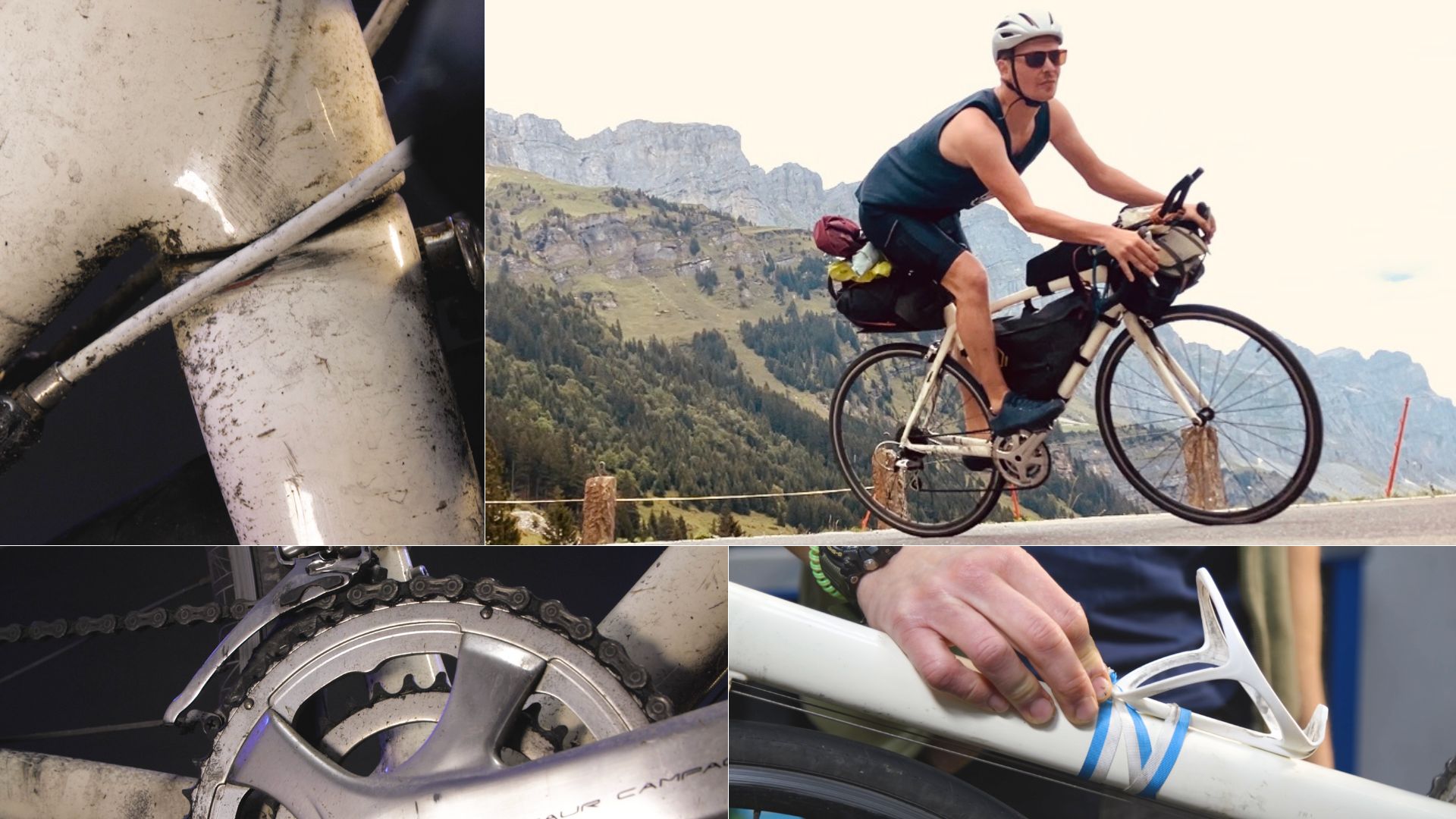
Bike shops often recommend that riders check their bikes in for a regular service, around once a year. Now, if you do all of your maintenance yourself and stay on top of component wear, this may not be necessary. But reader, I do not. However, somehow I covered 12,000 miles over a four year period and did little more than replace the tyres and brake pads.
The bike in question is ‘Blanche’, a 2007 Specialized Tarmac Expert which became subject to a custom build after I rescued the frame from a skip in 2021. Alongside being both my general purpose and commuter bike, Blanche has served as my steed on numerous fully laden cycle tours, including John O’Groats to Lands End, Calais to Nice, Montpellier to Bilbao, and most recently a tour around Germany, Austria and Switzerland. My rides have often been laden with 20kg of baggage, with some accidental gravel thrown in for good measure.
“Why has it never been serviced?” I hear you ask. The short answer to that is because nothing had gone wrong with it, which is true. Barring the occasional gear miss-shift or creak from the bottom bracket, I hadn't encountered any serious issues with the bike. It’s fair to say my approach to this stuff is reactive rather than preventative.
Our tech editor's view...

Ed can shoot better video on his phone than any of our writers could manage on a five-figure camera, but, he’s not a tech expert. We asked tech editor Andy Carr for some words of advice for similarly non-mechanical bike enthusiasts…
More power to Ed for loving the ride over anything else, but we want people inspired by his frugal journey to find their way home in one piece too. When it comes to neglecting essential maintenance you might get away with it like Ed did, but at these extremes it really is a matter of when not if.
By all means rescue an old frame from landfill and build it up – Ed, you’re a hero for our time – but have an expert check the frame and fork before you put it back on the road.
The ‘ring of death’ present on Ed’s steerer is common and can happen in much younger bikes, but in a bike of this age, it's forboding. Stop riding, and get it replaced.
Get The Leadout Newsletter
The latest race content, interviews, features, reviews and expert buying guides, direct to your inbox!
Damage anywhere on the surface or cut end of the steerer can create a weak point, or stress riser. This is like an escape hatch for the force stored up in the steerer. When it does escape, it won’t bend or crumple in a controlled way it will just snap without warning. Resulting in dental work, or death.
Chains snap when they are way past their service life. Rim sidewalls collapse when they’re worn. Ignoring these facts can lead to violent connections with tarmac. Be warned. Stay safe out there. Get your bike serviced.
Shortly before my last tour, it did start playing on my mind that the chain wasn’t going to last forever and the prospect of it snapping midway up a steep pass in the Swiss Alps became cause for concern. “I’ll just buy a new chain, problem solved right?” Well, not quite. After four years of pretty heavy use, it was no longer a matter of replacing just the chain, but potentially all of the drivetrain components which had worn out alongside it. With no time to replace the whole lot, I opted to stick with the current drivetrain components, take a spare chain just in case, and hope for the best.
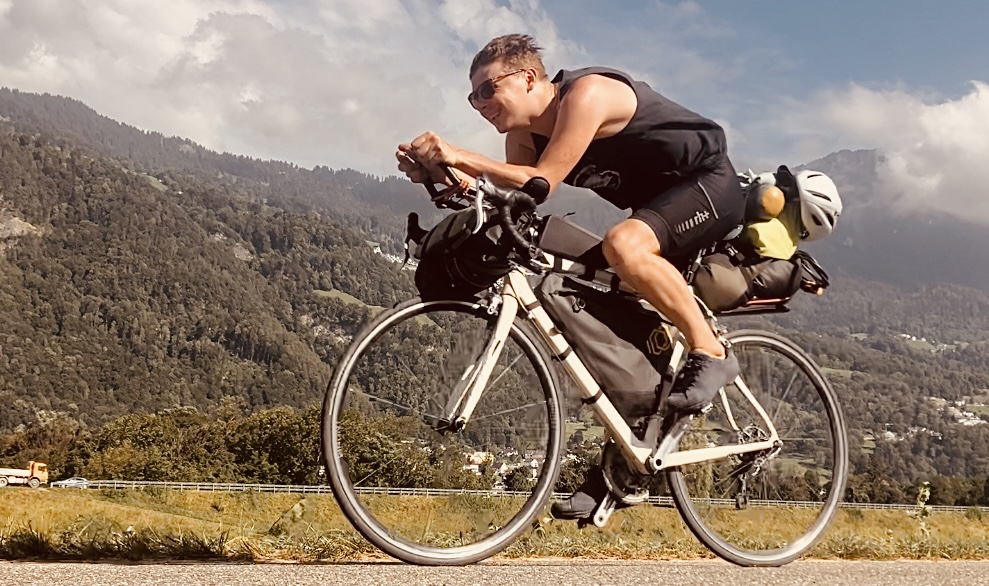
Ed has taken his bike on plenty of adventures
Having successfully completed the trip without any mechanical issues, now felt like an appropriate time to cash in my chips and take Blanche for a long overdue service, choosing south-west London’s Sigma Sports. Taking one look at the bike, head mechanic Dan Braid described it quite simply as “worn”. Placing a checker on the grubby, jet black oil covered chain, he explained “the wear on the chain gives a good indication to the wear of the drivetrain, 0.4 mm of wear indicates just the chain needs replacing and 0.8 mm means the chain and cassette”. In the case of Blanche, the chain was at 1.58 mm of wear. As a result of this, the chainrings with teeth now resembling shark fins also needed replacing, alongside the atomised cassette and jockey wheels.
“Hmm”, “Interesting” and “Okay..” became commonly used phrases whilst Dan thoroughly inspected and stripped the bike down. The word “siezed” was used in relation to both the front brake and the cable adjusters in the frame. In the case of the adjusters, the solution was relatively straightforward with the use of an inline adjuster when re-cabling the bike. The front brake was a bit more problematic however as it was completely seized onto the fork, and despite Dan’s best efforts to remove it with various torque wrenches and a hammer, it simply wouldn’t budge, so it was decided best to simply leave it in place.
The steerer tube brandished a 'distinct ring of death'
The most concerning revelation occurred when removing the fork and dismantling the headset as not only were the headset bearings more or less non-existent, but the steerer tube brandished a “distinct ring of death”. Now I’d never heard of a ring of death prior to this, but in short, it occurs when the headset has been ridden loose and the upper bearing rubs against the carbon steerer tube. In the case of my bike, we were seeing just the very early signs, but left unresolved, the erosion gets worse and worse, eventually resulting in a potential fork failure. It’s worth mentioning that in the normal run of things, Sigma would have stopped the service upon finding a ring of death, and ceased anymore work until the fork had either been repaired or replaced. Suffice to say, Blanche is now proudly wearing an updated fork.
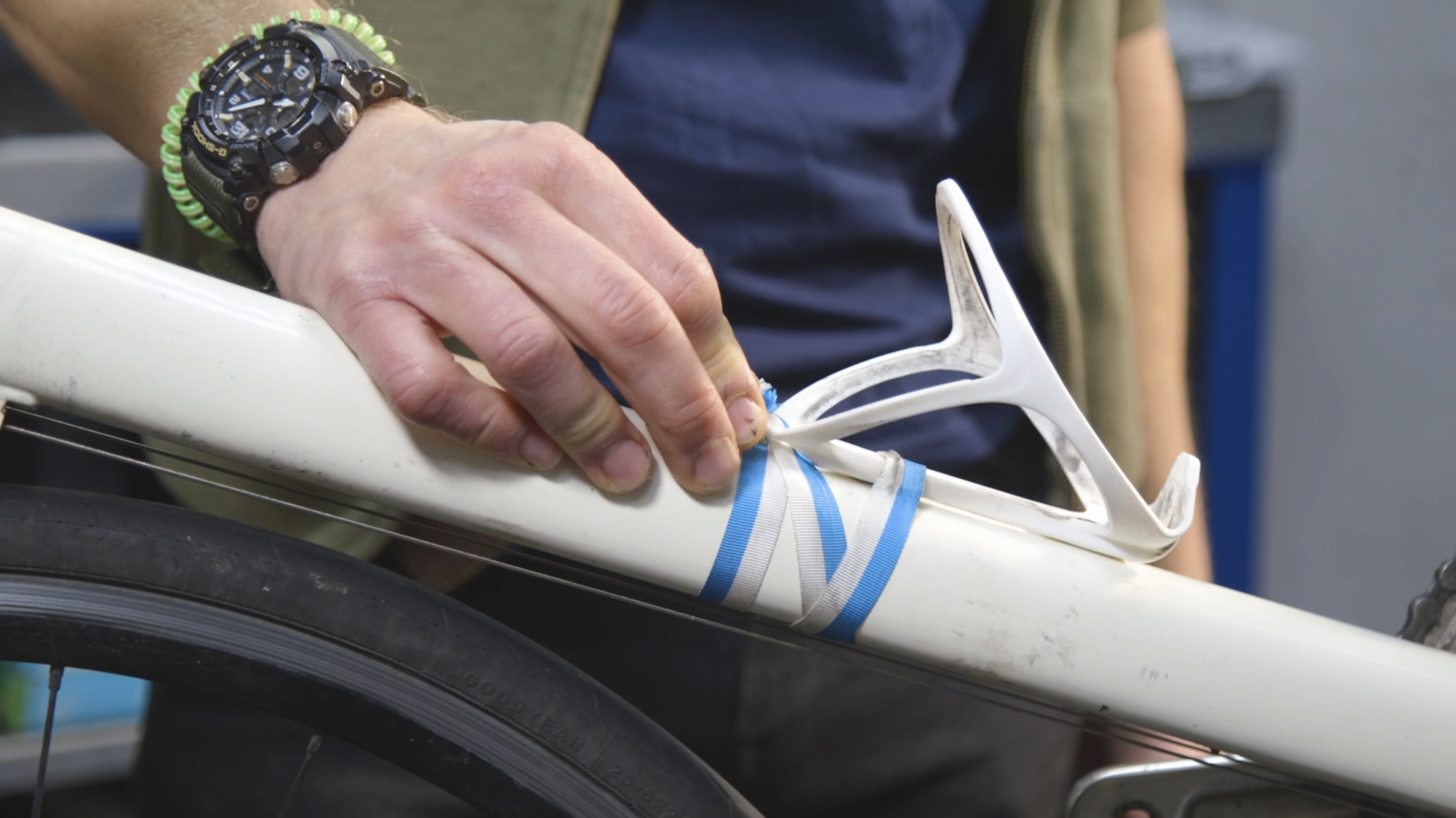
The ribbon secured bottle cage was a source of some amusement
One component of the bike which was met with much amusement was the bottle cage which was essentially held in place by a length of ribbon; I would consider this to be an ingenious hack, although others may disagree. A couple of the rivet nuts on both the downtube and seat tube had stopped working earlier in the year, meaning the bottle cage bolts would just endlessly spin inside the frame. Watching the process of removing the old rivet nuts produced a pretty heart-in-mouth moment as Dan sliced away at the boltheads with a loose hacksaw blade shear millimeters from the frame, before whacking them out with a hammer and flathead screwdriver. I’m relieved to reveal that the frame came away completely unscathed with two fully functioning rivet nuts carefully punched back in.
One thing which became a bit of a trend when Dan was stripping the bike down was a complete absence of grease on the components. Unthreading the bottom bracket revealed it to be pretty much bone dry, and not only that, the outer shell was covered in paint (which I guess is the price you pay if you get a frame resprayed on the cheap by a non bicycle specific company). The bottom bracket was hence rethreaded and faced, a job which Dan described as therapeutic but also reckoned had never once been done since the frame left the Specialized factory.
Expensive rim brake wheels are something which I happily didn’t think of as a wearable component for quite some time (ignorance is bliss) but as it turns out, rims are ultimately a consumable item, especially if not well maintained . As Dan pointed out to me, “the wear on the rims can be greatly reduced by checking and changing your brake pads regularly” and “disc brakes have stopped people from wearing their rims out prematurely”. Now, obviously, I am stranded with a rim brake bike, but if you closely inspect your brake pads for any aluminium fibres collected in the pads themselves and “pick them out with a scalpel blade” you can dramatically reduce wear to the rims and extend their life tenfold. For reference mine looked like they’d been aggressively dragged across a tarmacked surface, despite never having had a crash. As you might imagine the tyres were also pretty well used, so I swapped out my beloved Goodyear Eaglesport rubber (which has served me well for over 5,000 miles) for a new pair of Schwalbe One 365’s, which in fairness are far better suited to the versatility demanded by the riding which Blanche is so often subjected to.
The bar tape served its purpose of clinging to the handlebars, but only by necessity rather than desire
The last thing which needed addressing were the soft furnishings of the bike: the hoods and bar tape. The latter was falling apart, when riding it still served its purpose of clinging to the handlebars, but only by necessity rather than desire. I was very happy to see someone who knew what they were doing replace the shifter hoods and re-wrap the bars.
The final bill

Blanche proudly after her service - before the new fork arrived, and Ed could actually ride the bike
So how much did this all come to and was it worth it? Well you’ll have to decide the latter part of that for yourself, but I have a sentimental attachment to the frame so unless it’s an absolutely obscene amount of money, I will happily continue to keep Blanche on life support until it literally gives in. For reference this is what the whole process cost:
- Sigma Sports Gold Service: £315
- Miche Neon wheels: 700 euros (£584)
- Campagnolo 11 speed chain: £29.99
- Outer chainring (Campagnolo Centaur 50t) £49.99
- Inner chainring (Campagnolo Centaur 34t) £29.99
- Campagnolo BB: £35.00
- Campagnolo Jockey Wheels £17.99
- Bar tape - £30.00
- Campagnolo Brake/gear cables & housing - £24.99
- Clarkes Brake pads - £9.99
- Schwalbe One 365 - 51.90 euros (£43.35)
- Total: £1,170.29
Was it worth it?
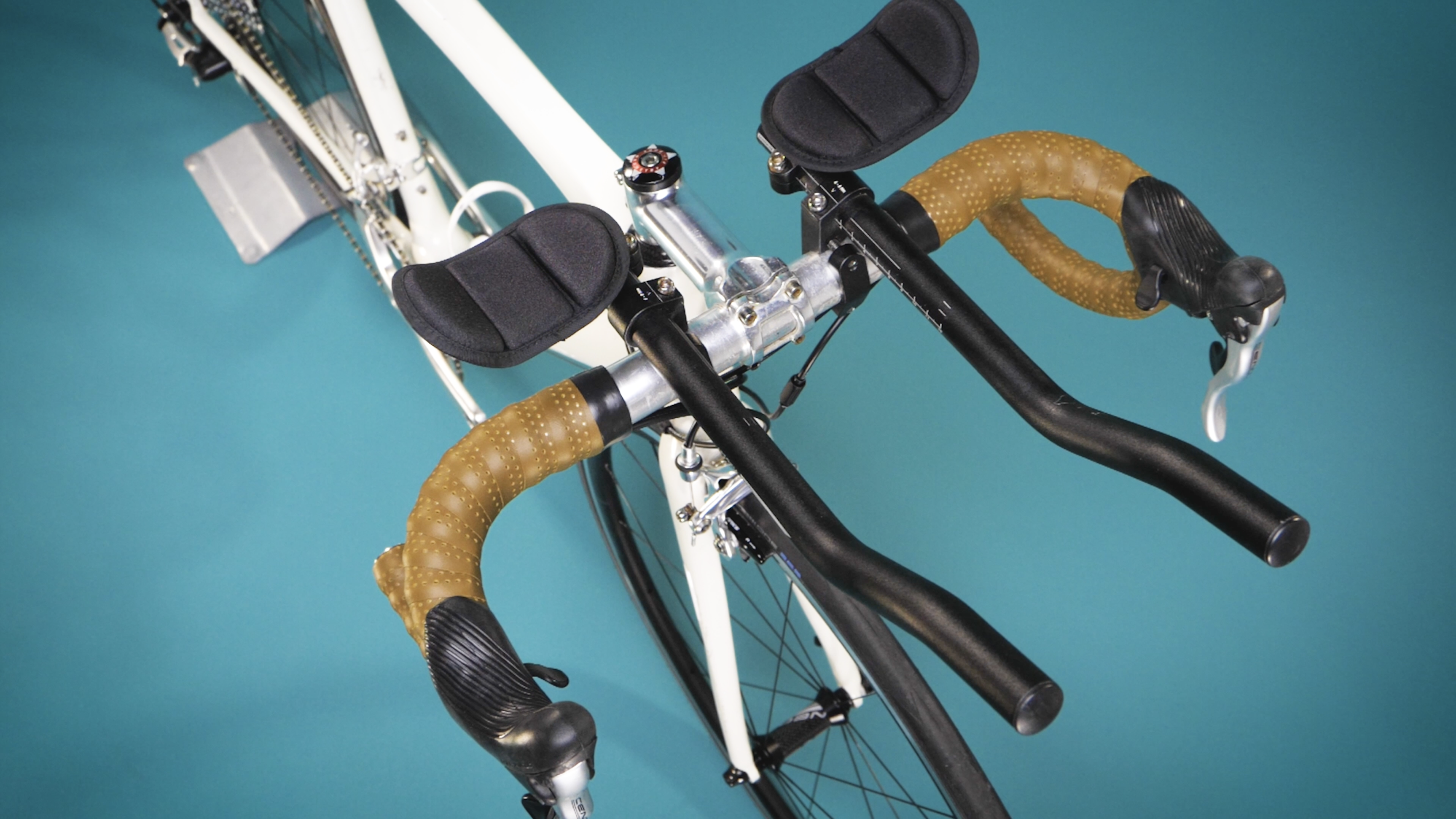
New bar tape finishes the look
With all of this work done presumably Blanche feels like a whole new bike? Absolutely! Given that I had no other bike as a reference point to what a brand new bike feels like, it makes sense that Blanche always felt great to ride, the bike deteriorated gradually over a long period of time and subsequently I was none the wiser. Riding it now, it’s very different, the gear changes are snappy in a way which feels completely alien, and the lack of random creaky noises is the icing on the cake. It’s still the same frame which I rescued from a skip and have travelled thousands of miles on, but I now have confidence that it will be able to handle many more tours before I have it serviced again. This whole process has definitely enlightened me to the benefits of not being complacent with servicing, a few easy takeaways being to use a chain checker at home and keeping on top of my wheel maintenance.

Thank you for reading 20 articles this month* Join now for unlimited access
Enjoy your first month for just £1 / $1 / €1
*Read 5 free articles per month without a subscription

Join now for unlimited access
Try first month for just £1 / $1 / €1
You must confirm your public display name before commenting
Please logout and then login again, you will then be prompted to enter your display name.
-
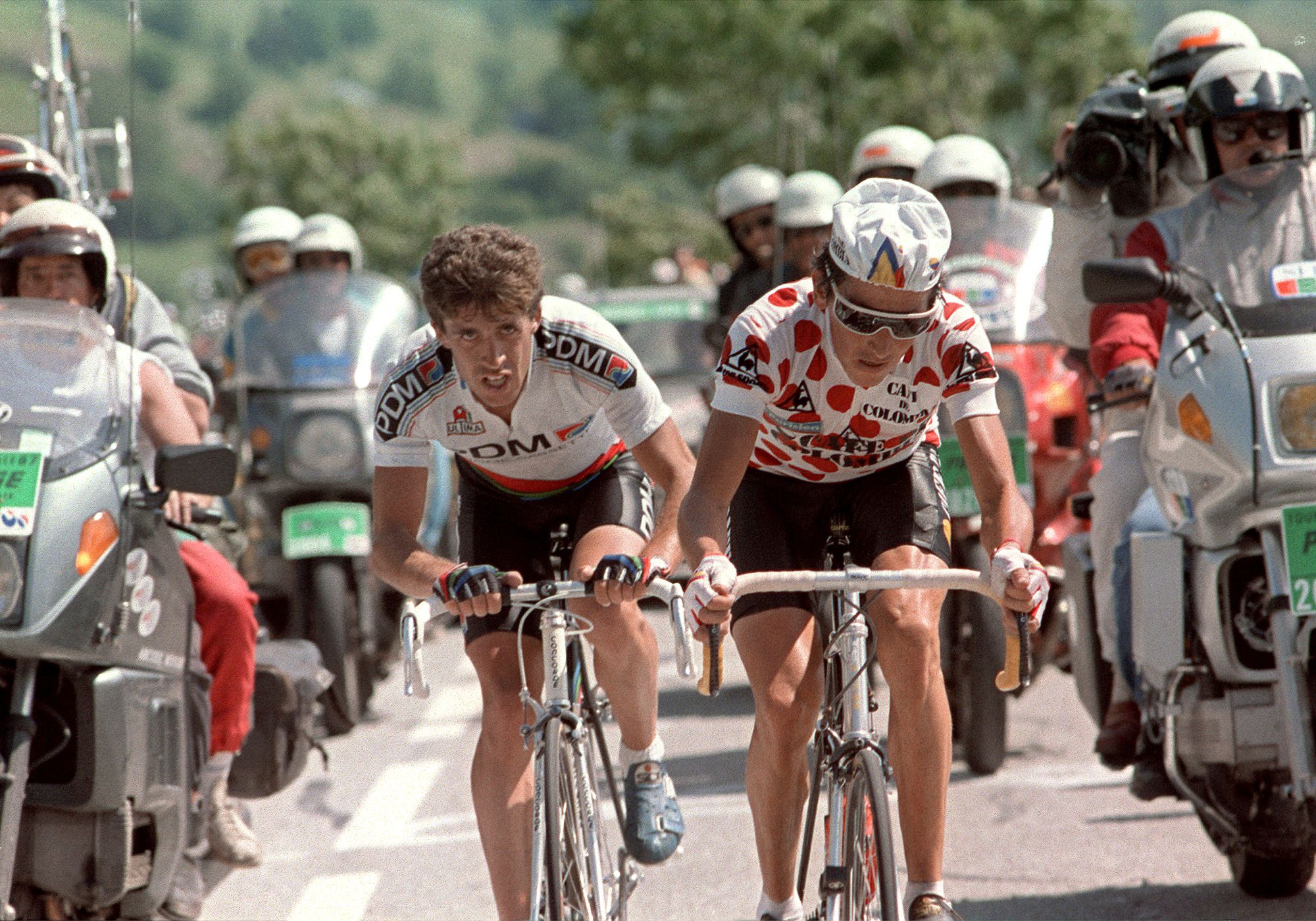 Colombian climbing star and former Vuelta a España winner Lucho Hererra could be investigated over murders of four people
Colombian climbing star and former Vuelta a España winner Lucho Hererra could be investigated over murders of four peopleA judge has called for an investigation into the former Vuelta winner who is alleged to have worked with paramilitary groups in Colombia
By Tom Thewlis
-
 I rode the full course of Liège-Bastogne-Liège and it opened my eyes to the beauty of this under-appreciated race
I rode the full course of Liège-Bastogne-Liège and it opened my eyes to the beauty of this under-appreciated raceFlanders and Roubaix have been and gone. Forget about them – some of the most epic racing of this Classics season is on the horizon
By James Shrubsall